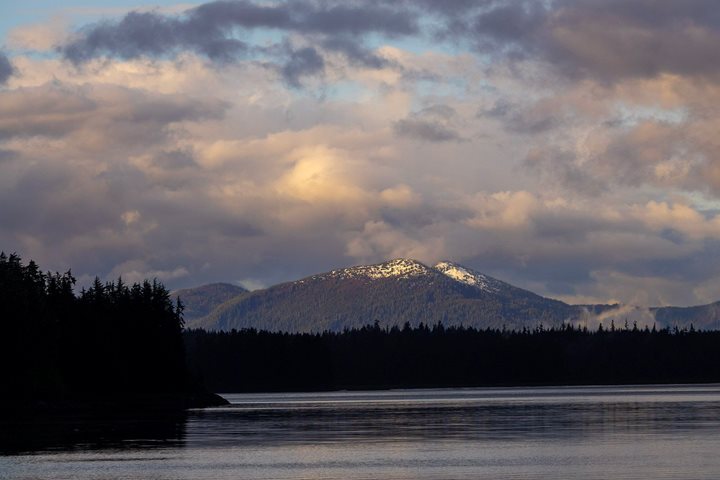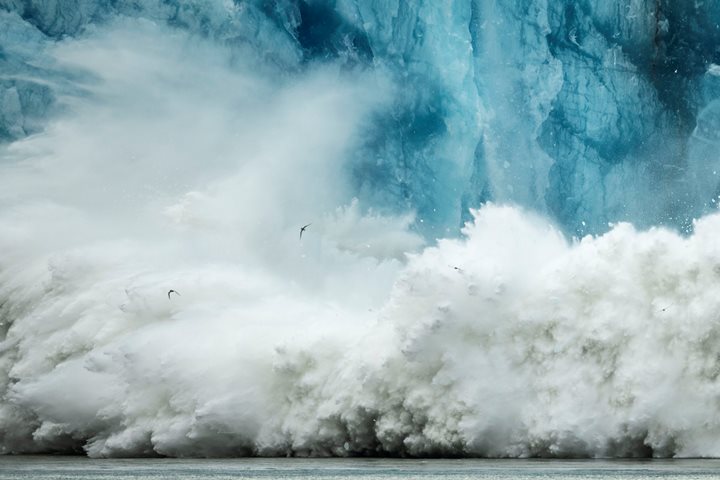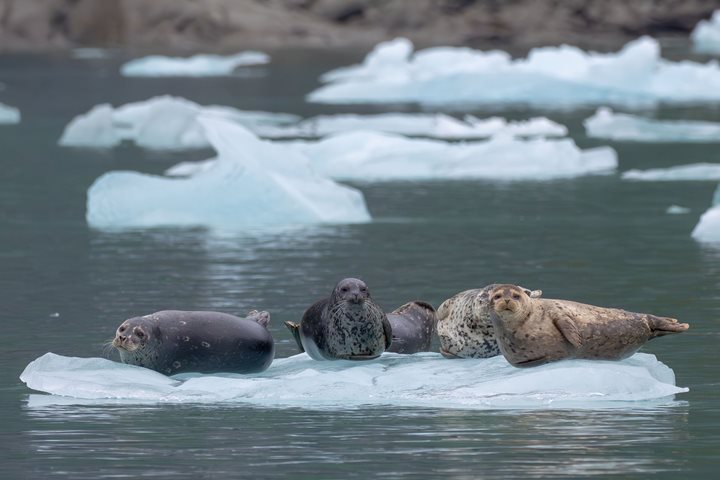Transiting back and forth into Tracy Arm over the course of a day provides a unique time travel experience. We witness not just the path of the glacially carved fjords but the succession of vegetation that has taken hold on these towering walls. At the mouth of this waterway, we see the future of the landscape, tall Sitka spruce and Western hemlock reaching high and jostling with neighbors for access to the light. As we progress, the alder starts to appear, nestling into any crevice or patches of moss that can support roots, collecting substrate. In the present we reach the force of change, the impressive South Sawyer Glacier, a river of compressed snow and ice that has been pushing its way through mountains to reach the ocean. Like a temporal yo-yo the National Geographic Sea Lion travels this winding route of splendor, absorbing all the wonders we pass along the way.
- Daily Expedition Reports
- 29 Jul 2021
Tracy Arm, South Sawyer Glacier, 7/29/2021, National Geographic Sea Lion
- Aboard the National Geographic Sea Lion
- Alaska
Ian Strachan, Naturalist/Certified Photo Instructor
One steady constant in Ian’s life has been the ocean. Born by the rocky shores of mid-coast Maine, his family repatriated to far north Queensland in Australia early on in his life where he became a dual-citizen and sparked his passion for exploring n...
Read MoreShare Report
Alaska Escape: LeConte Bay, Wrangell and Misty Fjords
VIEW ITINERARYRelated Reports
5/29/2025
Read
National Geographic Sea Bird
Endicott Arm
Dawes Glacier, located at the head of Endicott Arm in Southeast Alaska, is an active tidewater glacier in the remote Tracy Arm-Fords Terror Wilderness Area. Reaching the glacier requires a 30-mile journey through a narrow fjord lined with sheer rock walls rising over 3,000 feet. These cliffs are veined with waterfalls and often blanketed in mist. Throughout the fjord, remnants of the glacier float in the form of icebergs. The glacier feeds cold, silty meltwater into the fjord, giving the water a distinctive milky-green hue and supporting a rich marine food web. Harbor seals were hauled out on ice floes near the glacier. Gulls and Arctic terns were actively feeding, likely drawn by the small fish and plankton concentrated by the glacial outflow. The glacier calved several times, hurling large chunks of ice across the water’s surface, sending the birds fleeing. The sound of the ice hitting the water echoed off the steep rock walls that rise thousands of feet on either side.
5/27/2025
Read
National Geographic Sea Bird
Dawes Glacier in Endicott Arm
We could not have asked for a better way to end the expedition. Our last day was amazing! Visiting Dawes Glacier in Endicott Arm was a highlight with its crystal-blue ice and resting harbor seals floating by on the ice. In the evening, we even got to see a couple of humpback whales off the bow of the ship. We ended the day by watching images of the beautiful moments created on our expedition during the famed guest photo slideshow.







